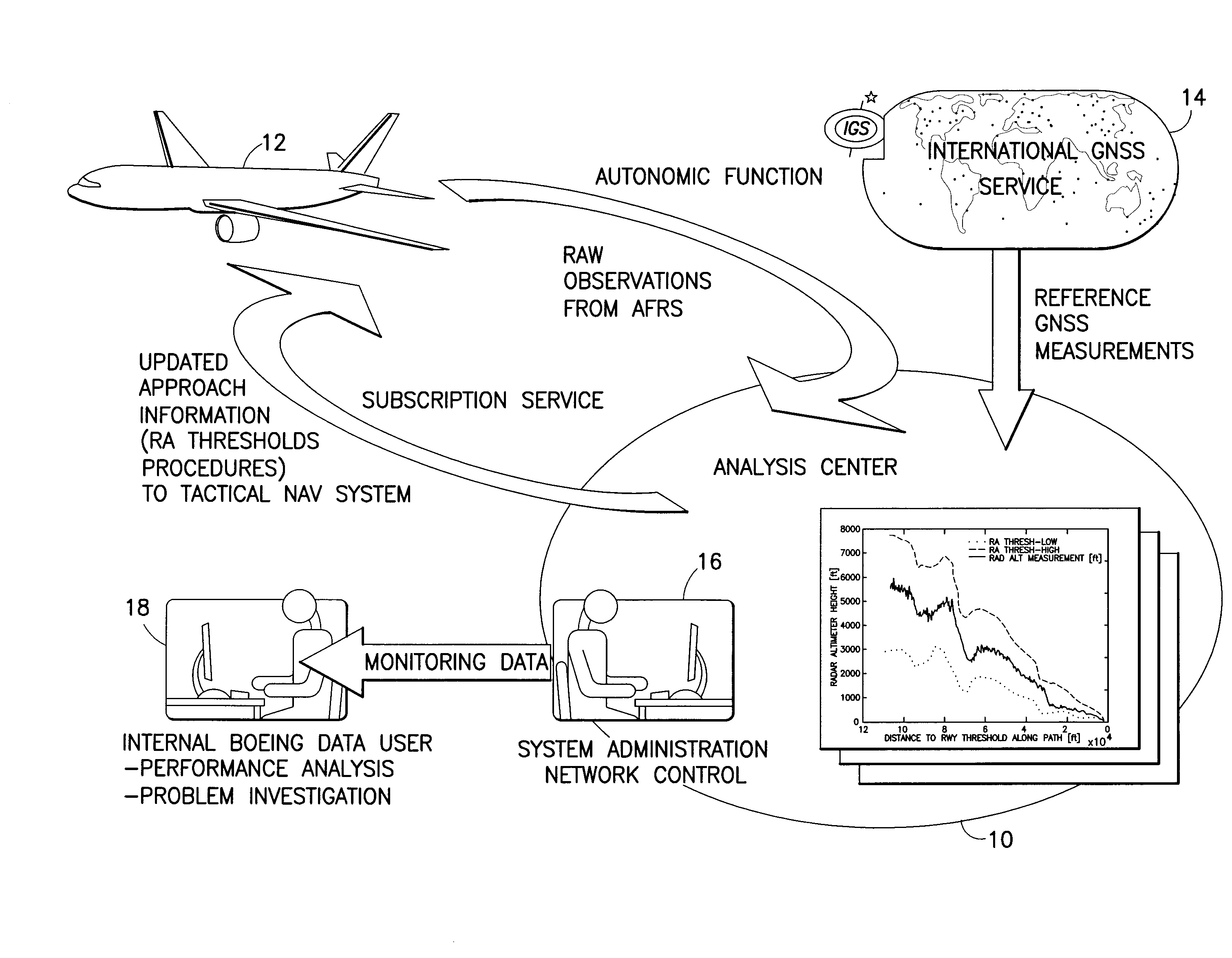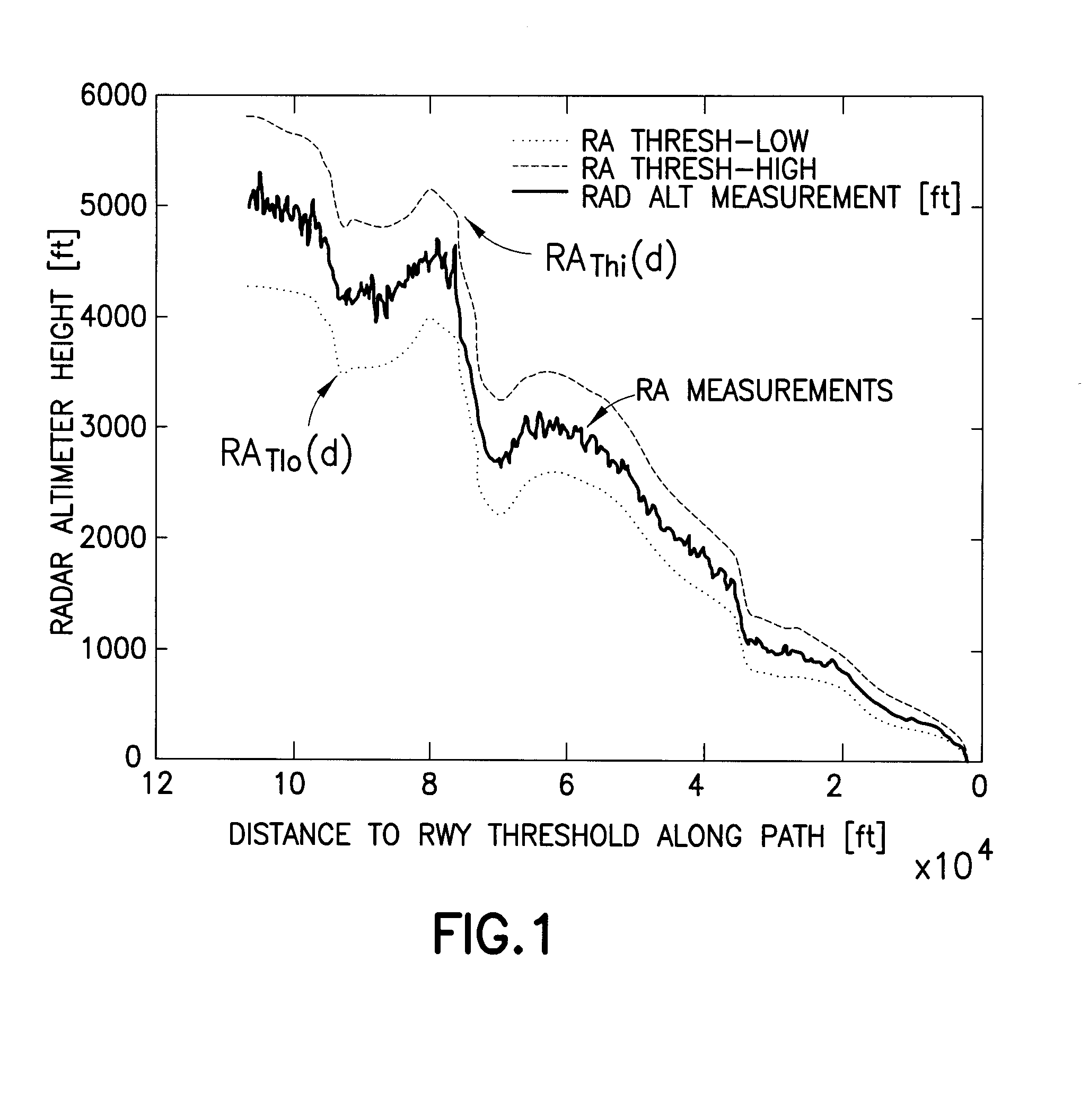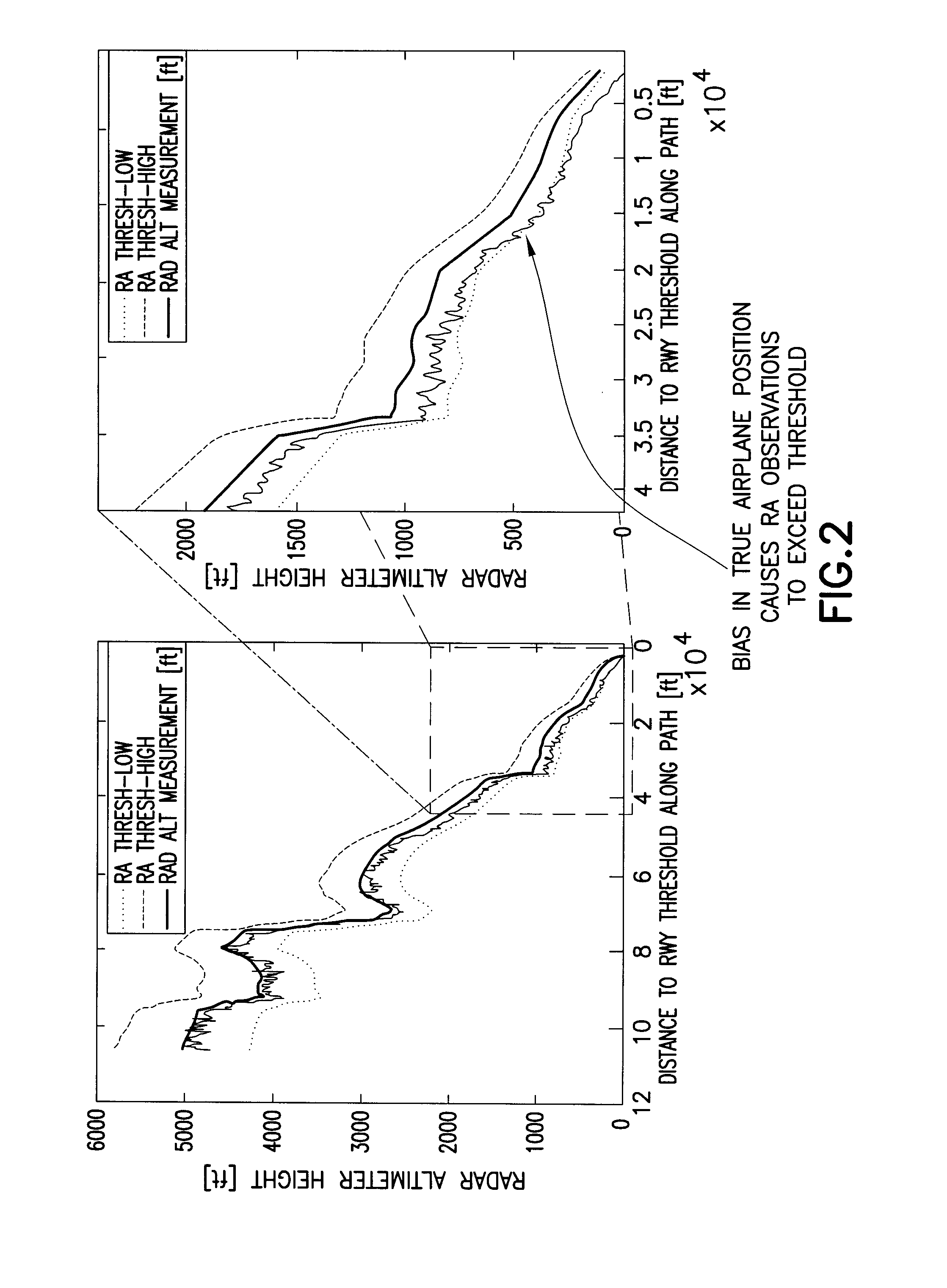Vertical Required Navigation Performance Containment with Radio Altitude
- Summary
- Abstract
- Description
- Claims
- Application Information
AI Technical Summary
Benefits of technology
Problems solved by technology
Method used
Image
Examples
Embodiment Construction
[0027]The following features will be disclosed in detail hereinafter: (1) a monitor for detecting unacceptable deviation of true airplane vertical position from a desired reference path; (2) means for determining the appropriate thresholds for said monitor; (3) a process for developing and maintaining the monitors over time via a so-called “Net Centric Navigation Service”; and (4) a system of using non-tactical GPS and RA measurements of airplane position in a post-processing system to derive the reference path which is the basis for the monitor.
[0028]The solution disclosed hereinafter differs from existing solutions in the following ways:
[0029](1) existing solutions do not monitor total system error through cross comparison based on an independent dissimilar sensor type;
[0030](2) existing solutions typically only allow for bounding or containment of navigation system error;
[0031](3) the present solution addresses (and effectively mitigates) common mode error sources associated with...
PUM
 Login to View More
Login to View More Abstract
Description
Claims
Application Information
 Login to View More
Login to View More - R&D
- Intellectual Property
- Life Sciences
- Materials
- Tech Scout
- Unparalleled Data Quality
- Higher Quality Content
- 60% Fewer Hallucinations
Browse by: Latest US Patents, China's latest patents, Technical Efficacy Thesaurus, Application Domain, Technology Topic, Popular Technical Reports.
© 2025 PatSnap. All rights reserved.Legal|Privacy policy|Modern Slavery Act Transparency Statement|Sitemap|About US| Contact US: help@patsnap.com



